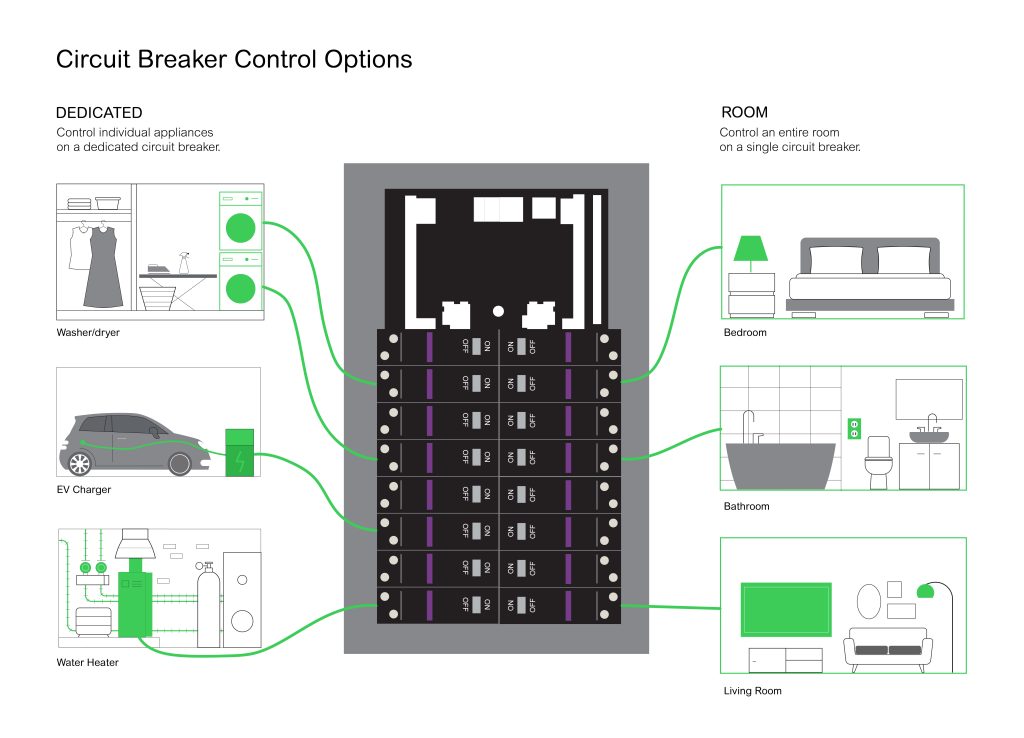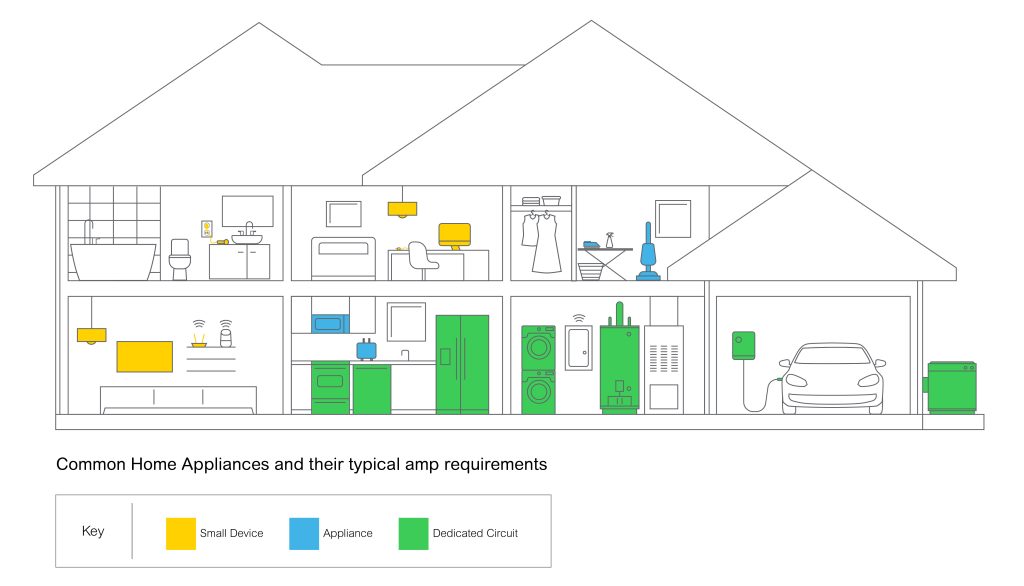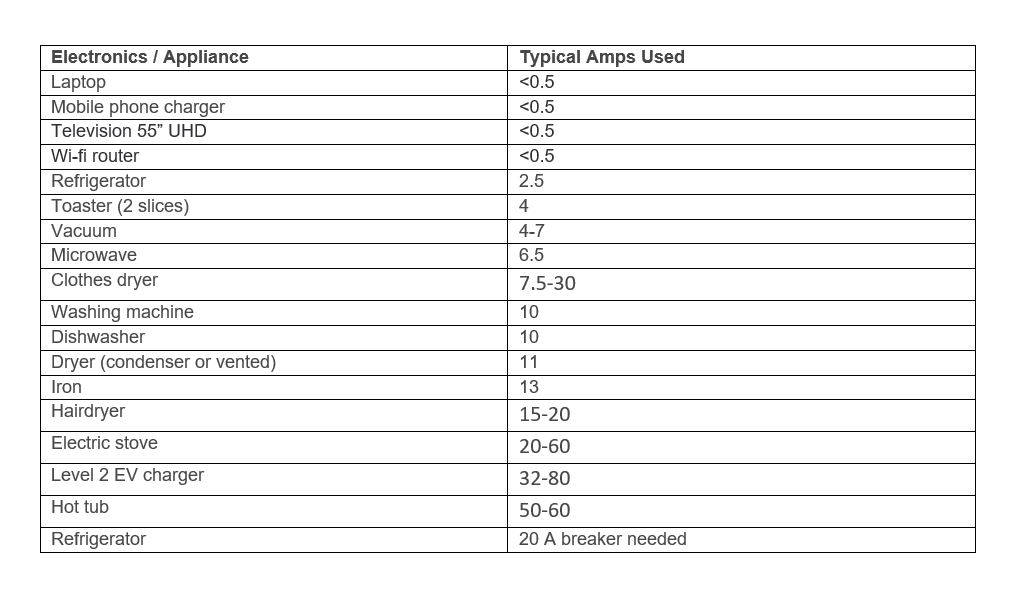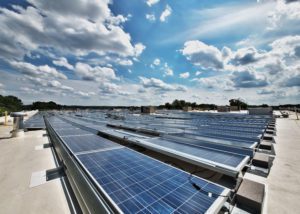1990. It seems like just yesterday—until you consider how far we’ve come with technology. Back then CDs were high-tech, and the internet and email were just emerging. Super Mario on a Nintendo console dominated this 16-bit era.
Unless you’re a collector, chances are high that any 1990 relics have seen better days. Even if you still own CDs in mint condition, would you even have the technology to play them? So why would you expect the “vintage” electrical panel in your home to be able to “play” to the needs of today’s tech, such as electric vehicles (EVs), solar energy storage, or electric stoves? If your home’s electrical panel is older than 1990, it’s probably time to consider an upgrade.
What’s an electrical panel? Twenty-nine percent of Gen Y and Gen Z individuals ask this question, as they do not know what a panel does (2023 Schneider Electric Survey of 2001 U.S. residents), even though 43% of homebuyers are Millennials. If the main electrical panel (or “breaker box”) in your home is older than you, it’s important that you understand its purpose, especially if you are thinking about switching to an electric vehicle (EV), installing solar panels, or getting a hot tub. Can your home energy capacity accommodate the loads?
So what is a panel—that gray metal box in your garage, basement, or maybe on the outside of your home? It makes sure you can safely distribute the electricity from the utility company to power all the electronics, lights, and appliances throughout your home. More important, it’s also an essential safety box that prevents your house from burning down. That’s because the circuit breakers inside the panel are designed to shut off or trip when any particular circuit is overloaded by too much current coursing through it (e.g., when you turn on the vacuum cleaner when someone is drying their hair in the adjacent room). The breaker box responds when the circuit tries to draw more power than it was designed to handle, creating too much heat.
“An electrical panel brings power from the utility, or from other sources, into your home and then distributes it safely to dedicated appliances or whole rooms using circuit breakers installed in the panel (see Circuit Breaker Control Options). Electricity can be brought to the house using a Combined Service Entrance Device (CSED), otherwise known as an All-in-One, or by using a load center that is attached to a utility meter.”)


When you’ve tripped a circuit, it’s probably the only time you’ve even noticed the electrical panel. Did you know how to fix the problem? And if your breaker box dates back to 1990 or older, any handwritten labels most likely have faded, leaving you in the dark.
Those instances may be annoying but consider this: If the breaker failed to trip and cut the power, that overloaded—and, therefore, overheated—circuit could start a fire or could potentially electrocute someone. According to the National Fire Prevention Association’s most recent report on home fires, “Electrical failures or malfunctions were the second leading cause of electrical home fires in 2015–2019 accounting for 13% of home structure fires.”

Safety is the number one reason to upgrade your panel. Growing home electrification is another compelling reason to think about a main panel upgrade (MPU).
The impact of greater home electrification on your electrical panel
Can your old breaker box meet the needs of electrification, which means powering your home with electricity instead of fossil fuels and using digital applications for real-time home energy management? The home installer partner Qmerit estimates 48M U.S. homes will need a main panel upgrade to support current and future needs such as:
- Installing a new water heater
- Switching your gas stove to an electric stove
- Finishing your basement
- Adding EV charging or solar panels
- Adding backup power like a generator or battery
- Upgrading heating and air conditioning (heat pumps)
- Getting a new hot tub
- Other needs for high amp loads
Let’s take a closer look at a common scenario prompting the need for a main panel upgrade: getting a hot tub. Although many newer homes have a 200-amp breaker box, hot tubs use 50A-60A, limiting the rest of the loads in your home. And if you have a 100-amp breaker box, you most likely cannot accommodate the hot tub at all. In any case, you need a bigger electrical panel.
Whether you have a 100A, 150A, or 200A-amp electrical box, it is wise to assess your home’s overall power needs today and tomorrow by future-proofing your main electric panel. For instance, you may already have an EV. Is your next goal to get solar panels? Or perhaps you want back-up power with battery storage? What about a heat pump? Here’s an overview of common home appliances and their typical amp requirements so you can start to see the bigger picture of your home’s electricity needs.


I encourage you to do some baseline math for your own awareness, but please consult a certified electrician to assess whether you need a main panel upgrade. This consultation is an important step before you decide to renovate your home, add solar, or even upgrade a major home appliance. No one wants the solar installer or contractor to be the bearer of bad news if they tell you the project will cost an extra $1K – $5K for a panel replacement or $7K – $10K for a smart panel. Not to mention that a service upgrade (e.g., increasing your main panel from 125A to 200A) is especially time-consuming and expensive at a cost of $10-30K. Luckily there are federal and state rebates and incentives to help cover the costs of some main panel upgrades (more to come about this in the next blog in this series).
A main electrical panel upgrade for all your home energy needs
Now that you know what an electrical panel is, you can start the process of assessing whether you need a main panel upgrade as you renovate your home or continue on your home electrification journey. The first step is to open that breaker box door and become familiar with your panel. Is there space for a new 20A breaker? Next, get a trusted electrician on board to guide you through an upgrade. Safety is always first. And if it’s time to say goodbye to your analog-era electrical panel, Schneider Home is here to empower you, now and well into the future.


Add a comment